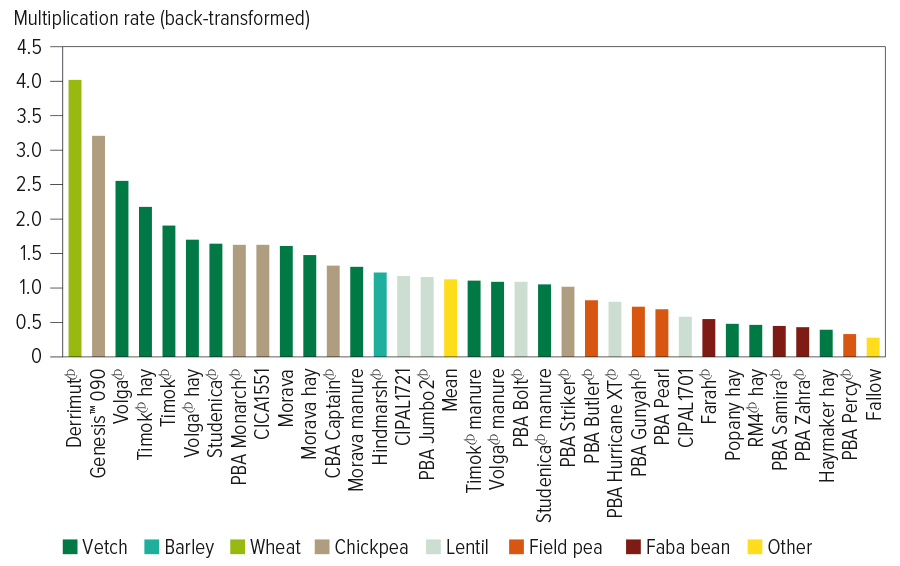Key points
- Screen paddocks for root lesion nematodes using a PREDICTA® B test
- In paddocks with yield-limiting nematode numbers, consult the annually updated National Variety Trials disease ratings to identify break crops with nematode resistance
Root lesion nematodes, which are widespread in Australian cropping soils, can damage plant roots and high numbers can lead to yield reductions of up to 20 per cent in the southern and western region and 50 per cent or more in the northern region.
Resistance ratings for pulses are now available to help manage root lesion nematode (RLN) populations. While some pulse break crops are known to reduce nematode numbers, information on the relative resistance of recent-release varieties has been lacking, limiting the opportunity for growers to effectively manage RLN.
Consequently, GRDC invested in research to improve the understanding of RLN populations in grower paddocks and to identify effective management options.
Numbers matter
In Victoria and South Australia, the most important species of RLN are Pratylenchus neglectus and P. thornei. A recent national GRDC-invested study, led by Agriculture Victoria, of 1965 paddocks sampled in Victoria and South Australia found P. neglectus in 90 per cent of paddocks and P. thornei in 29 per cent.
Yield-limiting densities were present in 11 per cent of paddocks for P. neglectus and one per cent for P. thornei. Although less common than P. neglectus, P. thornei is more damaging to wheat crops.
GRDC-invested research by Agriculture Victoria has demonstrated that potential wheat yield loss increases as nematode numbers increase, but the extent of yield loss depends on seasonal conditions.
Work by the SA Research and Development Institute (SARDI) using multiple years of field experimental data suggested that losses in the southern region are more likely in seasons with a hot and dry finish.
Identifying the presence of yield-limiting nematode numbers is vital to understanding the level of risk and easily achieved using a PREDICTA® B soil test. Nematode-tolerant crops are useful to reduce yield losses in any one year. But reducing nematode numbers for future seasons relies on being able to identify resistant crops that do not host nematodes.
Effective break crops
To identify crops that can be used to decrease nematode numbers in the field, Agriculture Victoria and SARDI conducted 46 field trials between 2015 and 2019.
The number of nematodes in individual plots was measured at the start and the end of the growing season to determine the change in nematode numbers – or nematode multiplication rate. A multi-site by season analysis by University of Adelaide biometricians as part of the Statistics for the Australian Grains Industry (SAGI) program provided a relative ranking of the effects of different crops on nematode numbers.
The results show that nematode numbers can be effectively reduced by growing resistant pulse break crops (see Figure 1), but the choice of crop depends on which species of nematode is present at yield limiting numbers.
Figure 1: Using NVT disease ratings, growers can select pulse crops that will reduce the multiplication of root lesion nematode (Pratylenchus thornei) in the field. Reference crops include a susceptible wheat (Derrimut), a moderately resistant barley (Hindmarsh) and an unplanted fallow.

Source: Jon Baker
To reduce the numbers of P. thornei, growers can use field peas or lentils. For P. neglectus, they can use field peas, lentils, faba beans or chickpeas.
Now all elite cereal and pulse lines approaching release are screened for resistance as part of GRDC’s independent National Variety Trials (NVT) program.
This means that growers who have identified yield-limiting numbers of nematodes in their paddocks with a PREDICTA® B soil test can select nematode-resistant varieties using the annually updated NVT disease ratings.
More information: Dr Grant Hollaway, 03 4344 3111, grant.hollaway@agriculture.vic.gov.au

























































